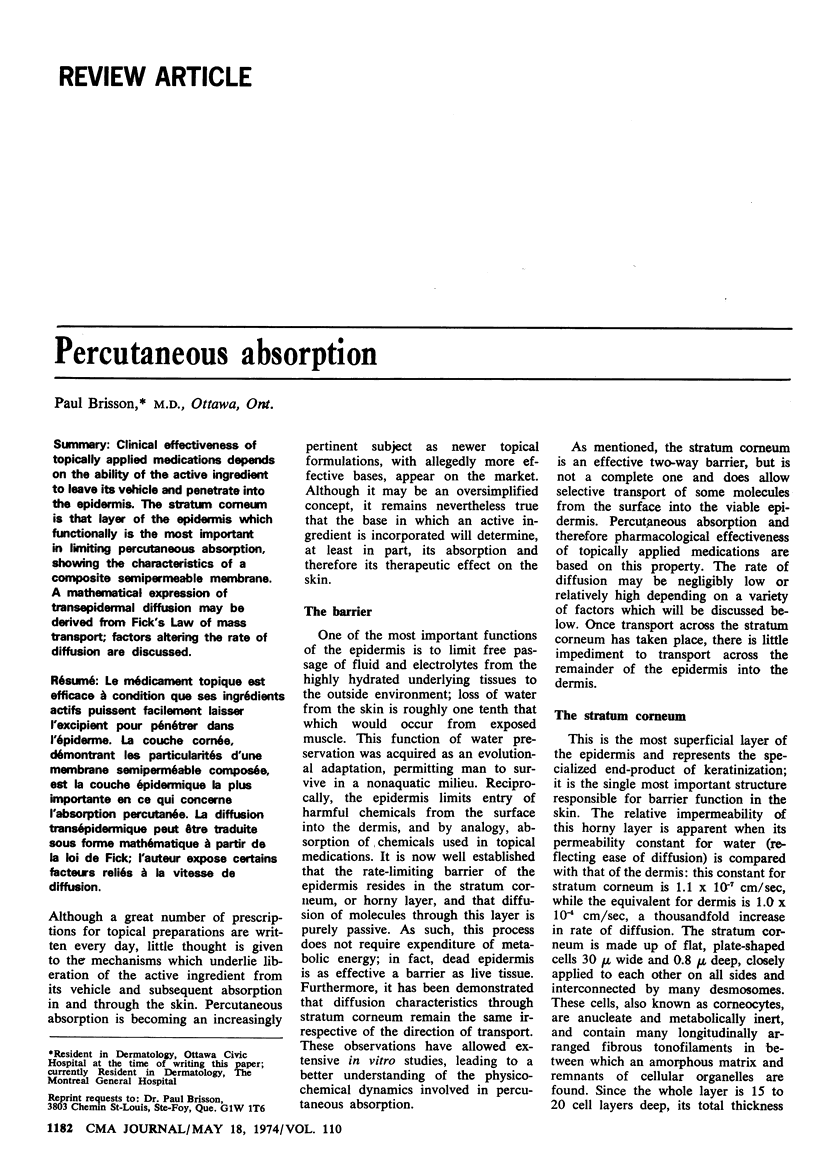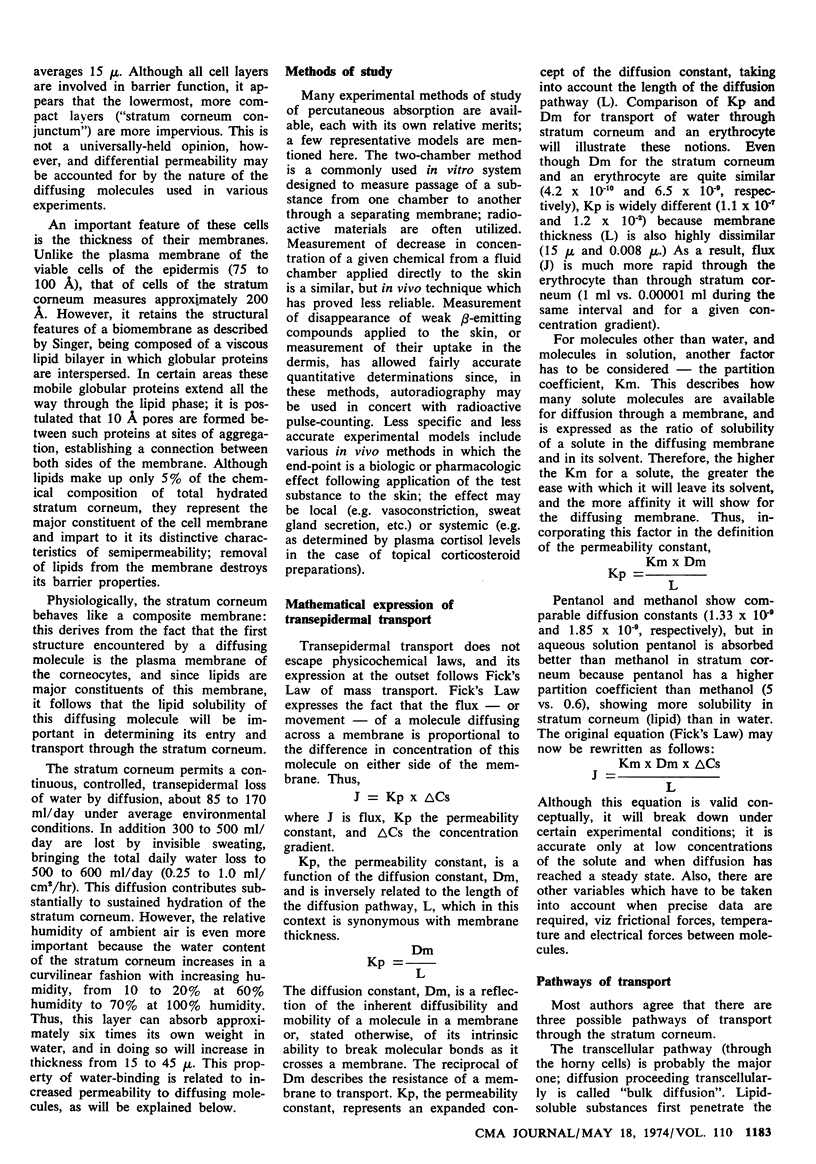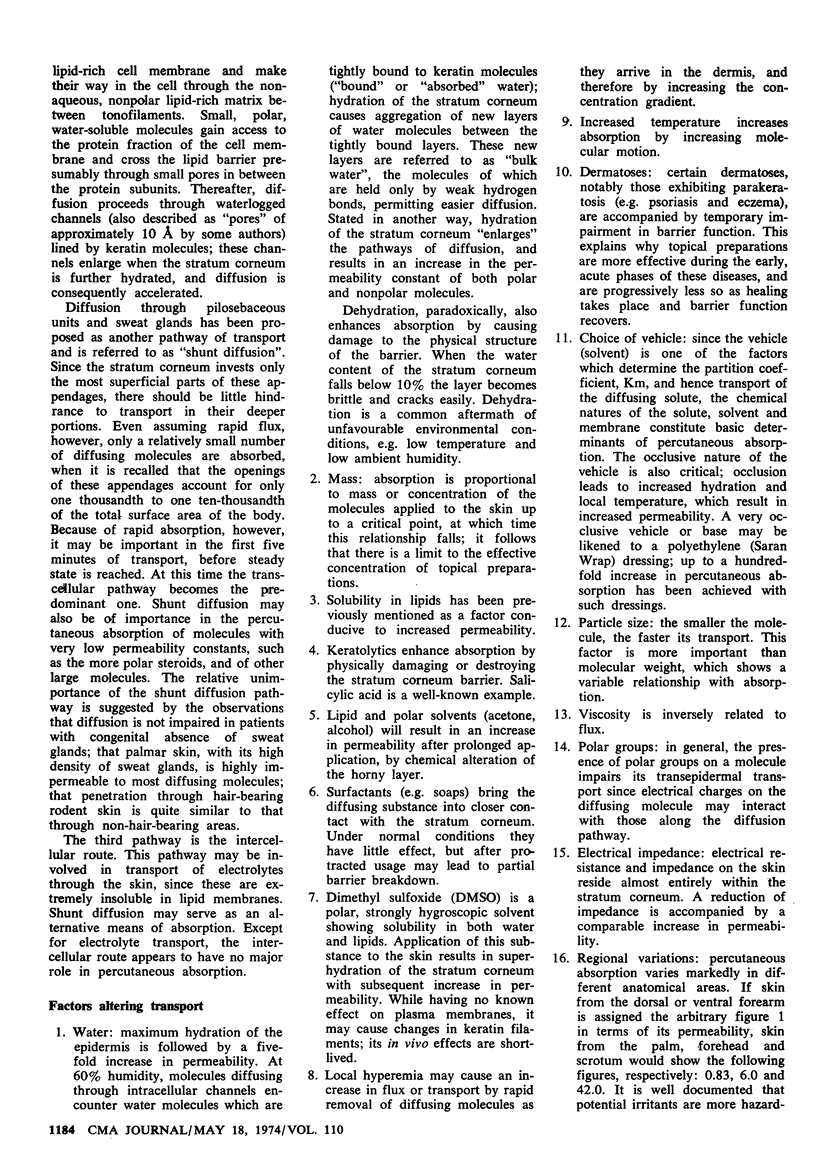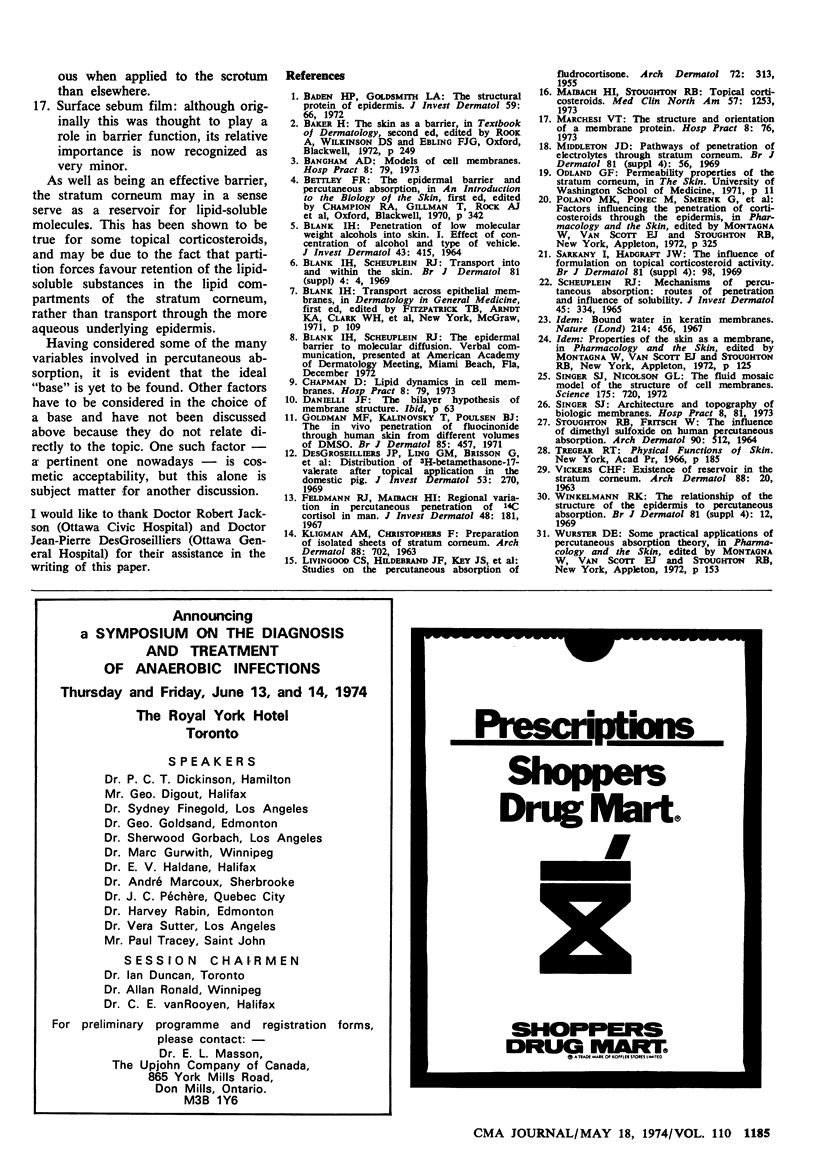Abstract
Clinical effectiveness of topically applied medications depends on the ability of the active ingredient to leave its vehicle and penetrate into the epidermis. The stratum corneum is that layer of the epidermis which functionally is the most important in limiting percutaneous absorption, showing the characteristics of a composite semipermeable membrane. A mathematical expression of transepidermal diffusion may be derived from Fick's Law of mass transport; factors altering the rate of diffusion are discussed.
Full text
PDF



Selected References
These references are in PubMed. This may not be the complete list of references from this article.
- BLANK I. H. PENETRATION OF LOW-MOLECULAR-WEIGHT ALCOHOLS INTO SKIN. I. EFFECT OF CONCENTRATION OF ALCOHOL AND TYPE OF VEHICLE. J Invest Dermatol. 1964 Nov;43:415–420. doi: 10.1038/jid.1964.174. [DOI] [PubMed] [Google Scholar]
- Coldman M. F., Kalinovsky T., Poulsen B. J. The in vitro penetration of fluocinonide through human skin from different volumes of DMSO. Br J Dermatol. 1971 Nov;85(5):457–461. doi: 10.1111/j.1365-2133.1971.tb14053.x. [DOI] [PubMed] [Google Scholar]
- Feldmann R. J., Maibach H. I. Regional variation in percutaneous penetration of 14C cortisol in man. J Invest Dermatol. 1967 Feb;48(2):181–183. doi: 10.1038/jid.1967.29. [DOI] [PubMed] [Google Scholar]
- KLIGMAN A. M., CHRISTOPHERS E. PREPARATION OF ISOLATED SHEETS OF HUMAN STRATUM CORNEUM. Arch Dermatol. 1963 Dec;88:702–705. doi: 10.1001/archderm.1963.01590240026005. [DOI] [PubMed] [Google Scholar]
- LIVINGOOD C. S., HILDEBRAND J. F., KEY J. S., SMITH R. W., Jr Studies on the percutaneous absorption of fludrocortisone. AMA Arch Derm. 1955 Oct;72(4):313–327. doi: 10.1001/archderm.1955.03730340011003. [DOI] [PubMed] [Google Scholar]
- Maibach H. I., Stoughton R. B. Topical corticosteroids. Med Clin North Am. 1973 Sep;57(5):1253–1264. doi: 10.1016/s0025-7125(16)32226-x. [DOI] [PubMed] [Google Scholar]
- Polano M. K., Ponec M., Smeenk G., Hendrikse J. C. Factors influencing the penetration of corticosteroids through the epidermis. Adv Biol Skin. 1972;12:325–338. [PubMed] [Google Scholar]
- STOUGHTON R. B., FRITSCH W. INFLUENCE OF DIMETHYLSULFOXIDE (DMSO) ON HUMAN PERCUTANEOUS ABSORPTION. Arch Dermatol. 1964 Nov;90:512–517. doi: 10.1001/archderm.1964.01600050060012. [DOI] [PubMed] [Google Scholar]
- Scheuplein R. J. Mechanism of percutaneous adsorption. I. Routes of penetration and the influence of solubility. J Invest Dermatol. 1965 Nov;45(5):334–346. doi: 10.1038/jid.1965.140. [DOI] [PubMed] [Google Scholar]
- Singer S. J., Nicolson G. L. The fluid mosaic model of the structure of cell membranes. Science. 1972 Feb 18;175(4023):720–731. doi: 10.1126/science.175.4023.720. [DOI] [PubMed] [Google Scholar]
- VICKERS C. F. EXISTENCE OF RESERVOIR IN THE STRATUM CORNEUM. EXPERIMENTAL PROOF. Arch Dermatol. 1963 Jul;88:20–23. doi: 10.1001/archderm.1963.01590190026002. [DOI] [PubMed] [Google Scholar]
- Wurster D. E. Some practical applications of percutaneous absorption theory. Adv Biol Skin. 1972;12:153–168. [PubMed] [Google Scholar]


